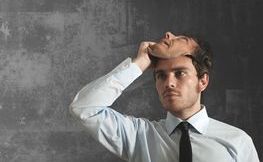"Reflection means to contemplate without necessarily having a purpose, whereas critical reflection means to contemplate with evaluation, through questioning and examining knowledge, beliefs and possible changes that need to be made." (Cottrell, 2017)
In critical reflection, you think about your practice, for example in your workplace, and ask yourself probing questions about what has happened in the past, and/ or what is happening now, about both what worked and what did not work. As a result of your reflection, you draw conclusions and learn lessons about what might happen in the future, and how you need to respond. The main focus of critical reflection is learning from your experience of, for example, your workplace performance, issues and problems.
When we reflect, as well as reflecting, with our personal beliefs, we reflect through other “lenses”, on multiple perspectives (Brookfield, 1995). Thus, critical reflection means examining your own personal assumptions, views and behaviours. This sometimes results in unearthing deep-seated attitudes or assumptions that may be culturally held and which some people can find unsettling at first. The key to successful critical reflection is getting the balance right by minimising the risk to the person and maximising their learning. However, with a deeper, more intense, more probing reflection, you are more likely to achieve better judgement and decisions. Critical reflection may well challenge leaders who are so driven to achieve in their work that they never question the consequences of their actions, or fail to consider other people’s viewpoints; the process of reflecting may also be challenging to some leader’s favourable perception of themselves.
Critical reflection is often used in organisations to learn from a critical incident.
Critical Incident Analysis
The following is a simple and easy framework to get you started. It guides you through reflecting critically on, and learning from, events that have significance for you. The questions under each heading are suggestions and you may want to use alternatives. There are no right or wrong answers, and the framework is flexible. However, the overarching elements of “The what?”, “So what?” and “Now what?” are important parts of a critical incident reflection.

What are the advantages and disadvantages of critical reflection?
Reported benefits include:
- Increased co-operation between people
- New ways of dealing with long-standing issues
- Motivation to deal with long-standing issues that previously froze action
- Openness to new/ other perspectives
- People become motivated to find new ways of working, especially where there has previously been conflict
- Improved prioritising of work
- Better morale
- New ways of relating with service users
- Insights into how to frame problems differently
- Looking at situations from multiple perspectives
- Holistic way of understanding, especially of complex or ambiguous situations
- Integration of theory with practice
- Facilitates insight
- Stimulates self-discovery
Reported disadvantages include:
- Risk that unearthing assumptions or beliefs threatens people and so works against the learning potential
- Workplace culture may work against reflection by exploiting people’s vulnerabilities
- Processes lack clarity of detail and therefore difficult to measure outcomes
- Reflective approach does not fit cost-cutting trends
- Some argue it takes too much time in a climate of maximum efficiency
- Outcomes are unpredictable
How do you carry out critical reflection?
Several different formats to guide critical reflection have been developed to meet the needs of individuals, groups, organisations and professions, for example:
Reflective Practice
Reflective Practice is a process of self-analysis where you reflect on your thoughts, feelings and actions in order to understand, evaluate and interpret events and experiences in which you are involved so that you participate in a process of continuous learning. It is based on the view that experience alone is not certain to lead to learning; however intentional reflection on your experience is essential for effective learning (Fook, 2007). It is a way of:
- using insights and learning from your past,
- to assess where you are now,
- to improve your present and future.
Reflective Practice is now used in many professions and services to support effective self-development at work. It is widely used in leadership development. It enables learning from experience and on-the-job-learning.
Action Learning
Action learning is a method for individual and organisation development which is based upon a small group of colleagues (a ‘set’) meeting over time to tackle real problems in order to get things done. They reflect and learn from each other as they attempt to change things and it is particularly effective for developing leadership and tackling complex problems. It is considered good practice for set membership to be voluntary, and the role of the Action Learning coach is to encourage and facilitate insightful questions that encourage dialogue and reflection from set members.
Critical thinking
Thinking critically requires you to use your thinking to reason. The aim of critical thinking is to get as near as possible to the truth. It is about:
- Asking and responding to questions systematically.
- Thinking clearly and rationally, understanding the logical connection between ideas.
- Carefully thinking through things, questioning ideas, assumptions and opinions.
- Identifying, analysing and solving problems systematically rather than by gut feel, instinct or intuition.

References
Bailey, J. R. & and Rehman, S. (2022). Don’t Underestimate the Power of Self-Reflection Don’t Underestimate the Power of Self-Reflection (hbr.org)
Brookfield, S. D. (1995). Becoming a Critically Reflective Teacher San Francisco: Jossey-Bass.
Cottrell, S. (2017). Critical Thinking Skills: Effective Analysis, Argument and Reflection (Palgrave Study Skills) Publ. Palgrave, UK
Madsen, S. (2020). The Key To Leadership Development Is Critical Reflection The Key To Leadership Development Is Critical Reflection (forbes.com)
Neale, P. (2021). Seven Tips For Designing A Leadership Self-Reflection Practice Seven Tips For Designing A Leadership Self-Reflection Practice (forbes.com)
How well do you reflect, as a leader? Test yourself with our Scorecard.
If you’re a member, you can test yourself on Critical Reflection and see if you meet the standard.
Spotlights
Further Resources
From the blog







